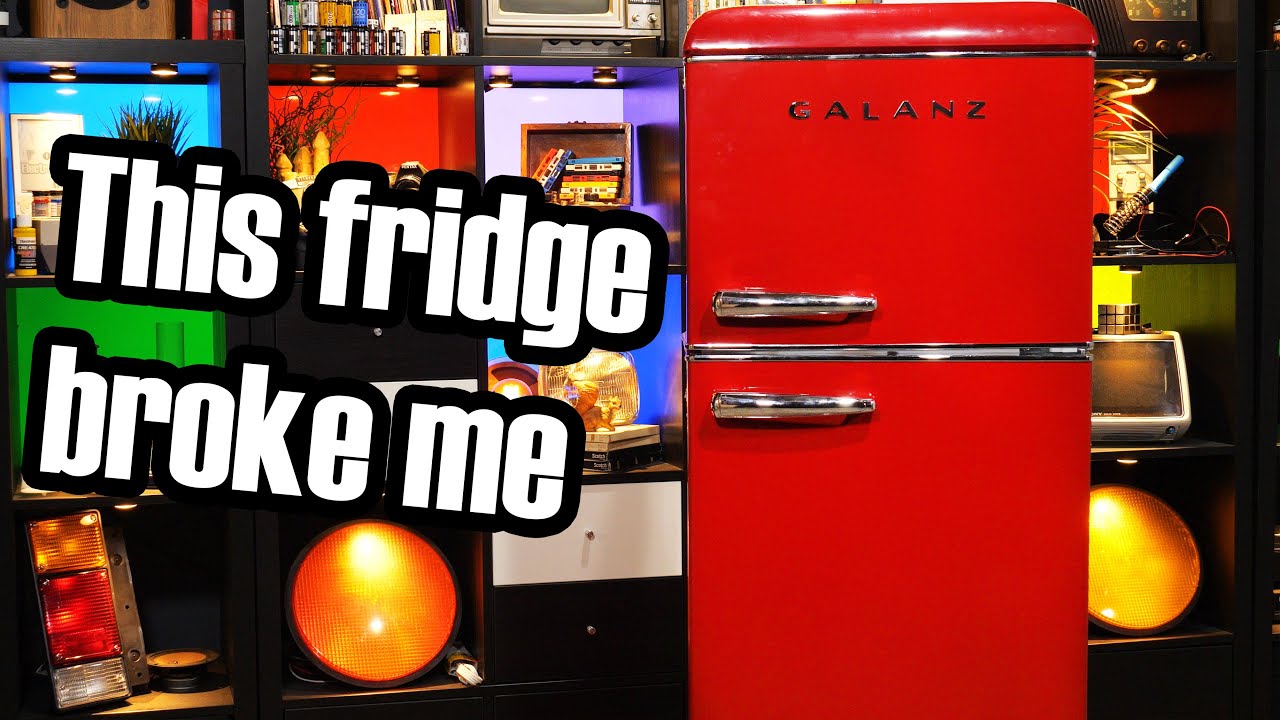In a video by @Techconnectify@mas.to, Alec goes into a deep dive into the simplicity of his particular model, its shortcomings and variety of data logging tests in an attempt to fix them.
TL,DW: Very simple, cheap and ingenious design, with one compressor loop between the fridge and freezer in series. However, its temperature sensor is wonky and so the fridge is more affected by how long the compressor operates than the actual temperature itself. There is a signficant temperature differential between the top and bottom, fans on the exterior or interior could help but with the faulty sensor only made matters worse. With the controller replaced with a proper temp control unit the fridge functioned much better.



As a European his videos are sometimes so funny :)
Here in europe we have two kind of fridges: American Style and the showed one (but with the freezer at the bottom). American style is this big bulky fridge that breaks quickly and costs a ton of money, most people use this style. It’s just the norm and they work reliable for decades, while also being more energy efficient.
It’s also important to note that food doesn’t get bad at 8°C (which Alec states in his video), storing food at 8°C is also the norm here in Europe. And I guess using this style of fridge more often in America would also make a lot of sense for most people.
I can see one simple reason why the american fridge with it’s self-defrosting feature makes a lot of sense in some American regions: Climate. In humid regions like Florida, the showed style of fridge would just need to be constantly defrosted. Which would be a huge pain in the ass obviously. And in all other southern-american regions where it never really gets cold it’s also a pain in the ass to manually defrost a fridge. For all regions where the temperature goes close to freezing temperatures, defrosting is not a big deal. You just need to put your refrigerated or frozen stuff outside for a few hours, defrost the fridge and put everything back inside. The frozen stuff doesn’t even get remotely thawn and doing it once a year is more than enough.
I don’t think that ~8°C thing is a universal “European” thing. I’m Finnish and I’ve always kept my fridge around 5°C, and the food safety authority here recommends 2 – 6°C
8C is about 46F.
Right from the USDA
https://www.fsis.usda.gov/food-safety/safe-food-handling-and-preparation/food-safety-basics/refrigeration#2
Bacteria grows more rapidly in food starting at about 40F.
I think I’ll trust the food safety agency over some random pretentious guy on Lemmy thanks very much.
Sorry for only telling how it is in europe. Here in Germany the desired fridge temperature according to state guidelines should be 7-8°C and that’s what I’m commenting. Just pointing out that the differences are stunning and funny.
Typical European attitude I see
I’m sorry but what is the typical attitude here? Finding it interesting how things and standards differ between regions? Do you feel judged by me just stating the fact that in Europe we use a different fridge design than Americans do?
Interesting how different international standards are. 3-4°C seems like a big difference between the agencies!
rabbit hole: why-do-fridge-temperature-standards-between-us-and-other-countries-differ
Do you have a source for the 8°C claim?
I of course only know how things are done here in Germany with my whole life living here.
But someone else found a stackexchange thread about specifically this topic: https://quex.cc/comment/72381
It’s a bit more nuanced than that:
https://www.economie.gouv.fr/dgccrf/Publications/Vie-pratique/Fiches-pratiques/Temperature-de-conservation
They said up to 8°C is fine for most of the stuff, 4°C for meat and 2°C for minced meat
I bought minced meat today here in Germany and looked at the packaging, it also clearly stated 2°C next to the best before date! For dairy products it always says “best before when stored at 6-8°C:”